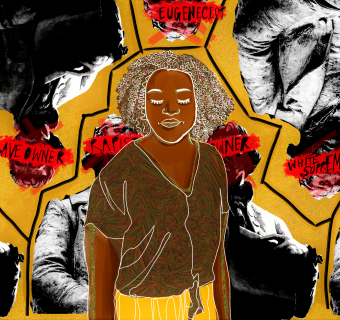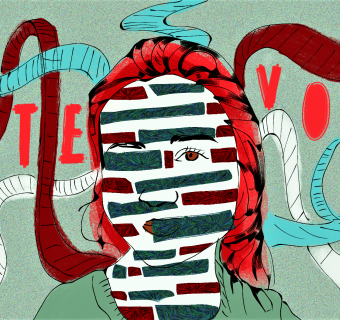I’ll admit it: I bought a comfort colors Bicentennial shirt. I took one of those free clear bags with the "200" logo emblazoned on the side. I like the idea of being a part of something that’s been around for so long, in a place of education and discovery, with peers who are as interested in knowledge as I am. It’s easy to buy into the huge celebrations UVA is hosting. The Bicentennial launch ceremony was obviously a success, with the huge turnout, and the long, impressive set list that performed that night. The University is putting a lot of money into making sure that students enjoy the Bicentennial, and that everyone remembers that this school has rich history… and money.
The problem is, once I start to think about it, I realize that maybe this celebration isn’t for me. After all, women were only admitted in 1970, making UVA one of the last public schools to allow women. One hundred fifty-three of those 200 years we are celebrating are devoid of women’s contributions, their voices, and their presence on these historic Grounds. And now that we’re celebrating all the years before women were allowed, it makes it easy to see just how long that was!
A clever Yellow Journal graphic circulated a few weeks ago, showing a girl on the cover looking hopeful, fingers crossed, with text stating, “Women Excited for 2170 Bicentennial… Only 153 years to go!” I laughed right along with all my friends when I saw this, but the meaning behind this graphic is very true and very real. We are still waiting for our Bicentennial, and that wait is substantial.
The thing is, it does seem like the University is trying to be inclusive, regarding gender and more. The Bicentennial is hosting the Women’s Global Leadership Forum in November, bringing in powerful female voices from all over, including former Secretary of State Hillary Clinton, who will be speaking during the closing remarks of the two-day event. That’s a big statement. And during the Bicentennial Launch, we saw a few performances and appearances (Katie Couric introducing the first female graduates, for one thing) meant to honor all women’s contributions to the University.
And it’s not just women that UVA is trying to include in the Bicentennial celebrations. UVA’s history is full of racism as well as sexism, which it seems UVA is trying to address in these celebrations. The Bicentennial hosted a huge symposium about the history of slavery at UVA, which was an attempt to bring the names and stories of the enslaved men and women who helped build this University back into the light. These are significant events that the Bicentennial has sponsored, and this is only the beginning. I know I’m watching out for more Bicentennial-hosted events in the future.
But somehow, it feels as if the University is trying to assure us that, yes, this celebration can be about you! This celebration is for everyone here at UVA, regardless of our University’s history of exclusion!

Maybe that’s part of the problem. Maybe it feels forced. Maybe, as a University, we are entirely too focused on the past and glorifying our history, a history that’s full of blatant sexism, racism, and elitism. Sure, we can talk all day about women’s leadership, and the history of slavery and racism here at UVA, but what are we doing to change the day-to-day reality of women and people of color at this University? What does our faculty look like? Do the staff working in the dining halls and in custodial make a living wage?
As of 2016, 38% of the faculty were female, with African American women making up only 3.8% of the female faculty. Only 23.9% of the female faculty were women of color. And no, most of the staff working in low-paying positions do not make a living wage.
Last year in Clark Hall, there was a very powerful display up in the main room. It was called “Women in STEM” and it highlighted the sexism that women in STEM fields face on a daily basis, with interviews from female faculty here at UVA. It also revealed the sexism in UVA’s history. The display was filled with some surprising facts. Did you know that in the ‘60s, UVA used the honor system as one reason to explain why they didn’t allow women to attend the University? Apparently, the men of UVA thought women were too untrustworthy and lacked “honor” and would therefore undermine the system that UVA holds so dear. Sorry, my fellow female-identifying students, I guess we’ve been faking our respect for the honor code all these years. After all, we’re totally untrustworthy.
This display has stuck with me. It was the first thing I thought about when I saw that Yellow Journal graphic, and now every time I hear mention of the Bicentennial, it’s on my mind. At a public school that dragged its feet as hard as it could when other public schools started admitting women, where women weren’t considered honorable, and where the first class of female students had to work like bad-ass pioneers to prove their worth, it’s very easy for me to treat the Bicentennial with a bucket of skepticism.
I’ll probably continue wearing my Bicentennial merchandise, despite the issues I have with it. I do love this University, and that means working hard to acknowledge its history of sexism and racism every day. Sometimes we have to pick our battles, and if this battle is limited to sharing that Yellow Journal graphic on Facebook to remind people just how short a time women have been admitted to this University, maybe it’s a start.








